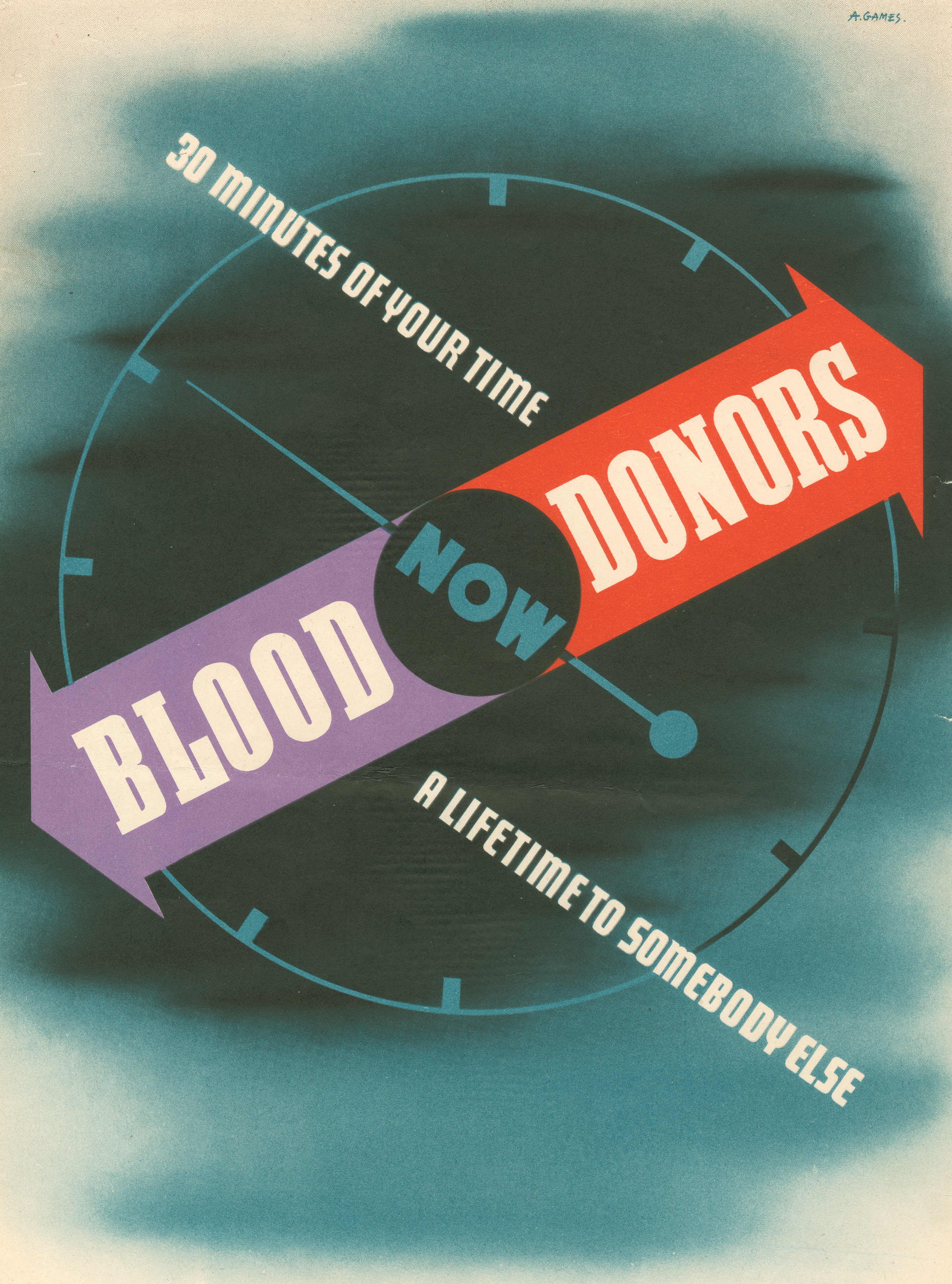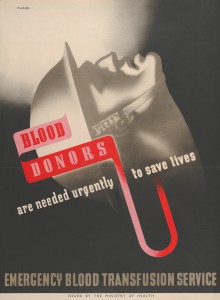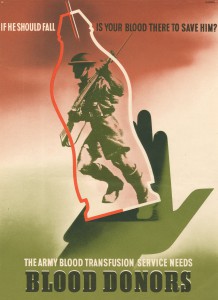
June 14, 2014, by Kathryn Steenson
Thirty minutes of your time; a lifetime to someone else
Today is World Blood Donor Day, organized by the World Health Organization to raise awareness of the need for safe blood and blood products and to thank voluntary unpaid blood donors. Appeals for public donations have been made for over sixty years, and the NHS Blood and Transplant service estimates that currently 4% of the eligible UK population donates blood each year.
This year, the theme of World Blood Donor Day is on ‘Safe blood for Saving Mothers’, which is highly appropriate as reducing maternal mortality was the motivation of the British obstetrician who performed the first successful human blood transfusions.
In 1828 Dr James Blundell published his account of transfusing blood (taken from husbands or attending doctors) into women suffering severe haemorrhaging during childbirth. Of the initial ten patients, half survived – not great odds, but significantly greater than their chances of survival without treatment. It wasn’t until 1900 that Karl Landsteiner discovered the ABO blood groups, for which he was awarded the Nobel Prize, and on whose birthday WBDD is held. Giving a patient an incompatible blood type can be fatal, so it is unsurprising that the early attempts had a much lower success rate.
The British Red Cross established the UK’s first blood transfusion service, at Kings Cross Hospital in 1921, but donation remained a fairly haphazard affair for another two decades. World War 2 was the main driving force behind developing the basis of the modern transfusion service, in anticipation of demand from military and civilian casualties. In 1939 four civilian blood banks were opened in the London area and an Army Blood Supply Depot was opened in Bristol. They proved so successful that a further eight centres were opened the following year under the supervision of the Emergency Medical Services.
These posters show the first major public campaign to encourage people to donate blood by emphasizing it is their patriotic duty. Soldiers were prepared to risk their lives defending freedom, and this was one way in which the civilian population could show their appreciation and contribute to the war effort. Blood was not just used for wounded servicemen, but also for the many people injured in bombing raids. Hundreds of thousands of people volunteered. The appeals were so successful that donor rates remained consistently high despite air raids, and the scheme paved the way for the establishment of a national, co-ordinated blood transfusion service established in 1946.
The posters (Ref: WWP 9/4/3-5) are taken from our Collection of British war posters produced during the Second World War, 1940-1945. They were issued by the Ministry of Health in 1943.
Manuscripts and Special Collections has a large number of resources for medical history, including the Nottingham Medico-Chirurgical Society Library, Records of The University of Nottingham Medical School, part of the Queen’s Medical Centre; 1942-2010 and other health related records. Selected resources from our ‘Mothers & Midwives’ exhibition about maternal medicine and health in the East Midlands are available from our website.
For more information about donating blood or to find out where your nearest donation centre is, visit the NHS Blood Donation website.
No comments yet, fill out a comment to be the first




Leave a Reply